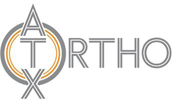Dupuytren’s Disease
What is it?
Dupuytren’s Disease, also known as Dupuytren’s Contracture, is a benign proliferative disorder characterized by benign nodules and cords that can be felt as thickened tissue in the palm of the hand. It may result in the fingers being pulled downward and into the palm. It is named after Guillaume Dupuytren (1777-1835), a famous French surgeon who was very gifted and productive but also very tough on his students (described by one person as “first among surgeons, least among men”). It is sometimes described as the Viking disease and is associated with people of Northern European decent. It is more common in men and tends to show up in the 5th-7th decade of life. It can be associated with other diseases such as diabetes, but its causes are generally genetic in origin or unknown. Generally, Dupuytren’s Disease is not painful, but does have a proliferative or inflammatory stage early in the disease process that may cause temporary discomfort.
Do I Need Treatment?
First of all, if you have any lumps or bumps in your hand that are concerning it is best to have them checked out by a doctor to ensure that they do not require further workup or treatment. If you have already been diagnosed with Dupuytren’s Disease, the basic rule of thumb is that if you can lay your hand flat on a table (palm down), then treatment is not recommended. Some patients may develop a nodule or cord in a location that causes hand dysfunction and may also require treatment. However, if your finger(s) have developed contractures and are not able to be fully extended, there are numerous options available.
What Treatment Do I Prefer?
My treatment of choice for Dupuytren’s Contracture is called needle aponeurotomy. It is a minimally invasive treatment with very little recovery time that can reliably correct finger contractures. During the procedure, a small needle is used to break up the tissue that is causing the finger to be pulled down. This is repeated in as many locations as possible to ensure a complete release. At the end of the procedure, a powerful steroid is injected to help soften the remaining tissue and reduce inflammation. There is usually no splinting or physical therapy required afterwards and most patients have full use of the hand within 1-2 days. While the procedure can be performed in the office, I generally prefer to perform the procedure at a surgery center as it can be uncomfortable using only local anesthetic and the results are not as reliable.
What Other Treatments Are Available?
A more traditional treatment for Dupuytren’s Disease is an open excision of the diseased tissue. This involves a long zigzag incision along the hand and affected fingers and the complete removal of diseased tissue. This is still the best option for some patients but I much prefer needle aponeurotomy as the results are excellent and the recovery time is minimal.
Another treatment involves the injection of an enzyme called collagenase (brand name Xiaflex) that is also used to break up the Dupuytren’s cords and nodules. However, I prefer needle aponeurotomy as it allows for the treatment numerous sites and I have achieved excellent results with this technique. However, Xiaflex is another minimally invasive option that can be considered.
